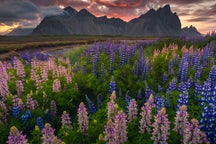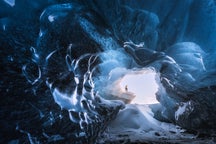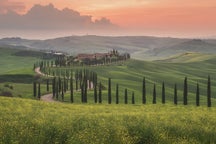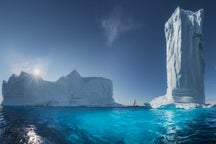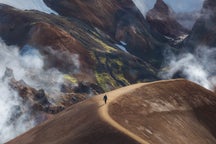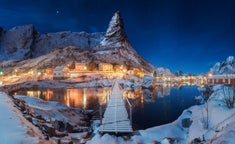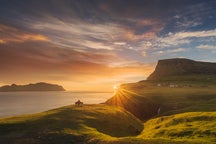One of the first things you are bound to notice when you visit Iceland, while driving around the country and traveling from one region to another, is water—flowing in streams, creeks, and rivers down slopes and under bridges or finding its way through the neighbourhood of a small town or from the centre of a mountain. There is no dearth of water in Iceland. The small island could fulfil the water needs—domestic and industrial—of the entire population of North America or Europe. Water is a big part of the Icelandic landscape and part of the some of the most fascinating natural wonders people who visit Iceland love visiting.
Sources of Water
There are three basic sources of water in Iceland. First, glacial water, which originates from under the glaciers, usually feeds larger rivers. It moves tons of mud, ash, rocks, sand, and a variety of other materials with its stream all the way to the coastline. Second, the direct run-of-the-rivers comprises of a variety of surface water, melted snow, lakes, rainwater, and small streams, forming rivers with varying volumes and depth, depending on the weather and season. Rivers often end their path by joining a glacial river. Third, the spring-fed rivers have clear drinkable water. They originate in the ground and form thousands of small creeks all around the island. All this water is the source of our beautiful waterfalls, created when a stream encounters a cliff in the landform and falls tens and sometimes up to two hundred meters.

Although there is an infinite number of waterfalls in Iceland, the island is believed to have 1600 waterfalls higher than two meters. Several waterfalls around the island don’t even have names and are rarely visited, despite their stunning beauty. They are hidden treasures and sanctuaries for enjoyment, relaxation and comfort.
There are a few waterfalls that are undoubtedly more interesting than others, drawing large crowds to experience, enjoy, witness, photograph, and admire their beauty. These waterfalls lure us in front of them, and sometimes behind them, to appreciate the moving and falling water as well as its sound. Every waterfall has a remarkable relaxing element that we love experiencing. So, which are the most exciting and interesting waterfalls in Iceland?
 Svodufoss is one of the lesser known waterfalls in Iceland. Photo by: 'Einar Páll Svavarsson'.
Svodufoss is one of the lesser known waterfalls in Iceland. Photo by: 'Einar Páll Svavarsson'.
Gullfoss
No matter who you ask—Icelander or tourist—there is no dispute that Gullfoss is the most beautiful waterfall in Iceland. It is the jewel in the crown: it’s a waterfall that has it all. Two cascades falling into a deep canyon, it houses a massive volume of water originating from all kinds of sources that vary from one season to the other. It is significant, powerful, and stunning, both when it flows in the summer and when it is frozen in winter. It is no surprise that it often tops the list of the most beautiful waterfalls in the world.

Dynjandi
The second most spectacular waterfall in Iceland, Dynjandi is located at the bottom of a deep fjord in the Westfjords. Not typically visited during winter, it is a great place to visit during the summers. The bridal-veil-like stream falling 100 meters predominantly consists of spring-fed water and surface water. It spreads out from top to bottom and looks like a large waterfall from a distance, but it does not have much volume. Hence, it is a very friendly waterfall.

Skógafoss
Skógafoss is a 60-meter-high waterfall visible from the Ring Road, which is used by most tourists driving in Iceland. Like Gullfoss, this waterfall originates from both glacial and spring-fed water. The volume varies between seasons, but the waterfall always looks powerful. During winters, the vapor from the falling water forms sculptures at the bottom of the waterfall, making this waterfall more ideal to visit in winter than in summer.
 Skogafoss on the south coast of Iceland. Photo by: 'Einar Páll Svavarsson'.
Skogafoss on the south coast of Iceland. Photo by: 'Einar Páll Svavarsson'.
Dettifoss
Located in the northern region of Iceland and nestled in the magnificent canyon Jökulárgljúfur, Dettifoss is the powerhouse of Icelandic waterfalls. It is a great example of a glacial river waterfall, sourcing its water predominantly from the outlet glaciers of the massive icecap Vatnajökull. Always under the tread of a major eruption in Bárðabunga and monumental floods, it is one of the most fascinating wonders in the Icelandic landscape. You wouldn’t even need to go close to it to feel the power of the stream and the fall.

Háifoss
Háifoss is a mystical, high, and majestic waterfall at the edge of the highland, almost hidden in a deep and narrow gorge with its neighbor Granni. Fed by the river Fossá (Waterfall River), it is one of the highest waterfalls in Iceland. Although Háifoss is an interesting sight, the road leading to the parking lot is only suitable for 4X4 cars during summer, and it is only possible to drive to the waterfall in a large 4X4 modified vehicle during winter.

Seljalandsfoss
Seljalandsfoss is one of the friendliest and most popular waterfalls in Iceland. It has a “fairytale glow” and is one of the few waterfalls that you can walk behind. For many visitors, walking behind the water and looking at the evening sun through the falling water feels like a childhood dream come true. If you plan to see only one waterfall in Iceland, Seljalandsfoss is probably the most fun one to visit.
 Behind the water of Seljalandsfoss. Photo by: 'Einar Páll Svavarsson'.
Behind the water of Seljalandsfoss. Photo by: 'Einar Páll Svavarsson'.
Goðafoss
Goðafoss is a product of one of the mightiest rivers in Iceland—Skjálfandafljót. It has one outstanding quality: it is a beautiful waterfall. At 12 meters, it is not very high, but it is quite broad and a joy to visit both in summer and in winter. Goðafoss is also very photogenic, and a visit here requires a fair amount of time to click pictures from both the east and the west sides of the waterfall.
 Godafoss is easily accessible. Photo by: 'Einar Páll Svavarsson'.
Godafoss is easily accessible. Photo by: 'Einar Páll Svavarsson'.
Svartifoss
One of the most stunning marvels in the Icelandic landscape are basalt columns—hexagonal stacks formed during lava cooling. Svartifoss is formed by a small stream that falls from a cliff of basalt column stacks, creating a small yet spectacular waterfall. Situated on the moors at the Skaftafell National Park, visiting this waterfall requires a short hike that adds to the experience.
 The basalt columns of Svartifoss. Photo by: 'Einar Páll Svavarsson'.
The basalt columns of Svartifoss. Photo by: 'Einar Páll Svavarsson'.
Hjálparfoss
Hjálparfoss is so stunning, both the waterfall and the surrounding area, that it is almost impossible to take a bad photo of this spectacular natural wonder. Similar to Háifoss, it is part of River Fossá. Although other waterfalls might be more interesting because of characteristics such as the volume of water or height, Hjálparfoss is undeniably one of the most beautiful sights in the Icelandic landscape. It is easy to visit, both in summer and winter.

- See also: Private Multi Day Tours
Aldeyjarfoss
Surrounded by a spectacular formation of basalt columns, Aldeyjarfoss is a must-see if you are traveling in the northeastern region of Iceland. It is formed by Skjálfandafljót, which also feeds Goðafoss. Located at the edge of the Icelandic highland, Aldeyjarfoss is slightly difficult to visit in winter and takes some time during summer.

Even though the distance between some of these waterfalls is considerable, we must remember that Iceland is a small island, a small country. It is also noteworthy for photographers that having an excellent and knowledgeable guide with you that takes you to all the other places is an advantage. And even though all these waterfalls are photographed thousands of times every season, we know that there is always a new way to take a spectacular photo.
About the Author: Einar Páll Svavarsson is a landscape photographer based in Iceland. You can find more of his work on his website, or by following him on 500px.
Can't get enough of the waterfalls in Iceland? We've compiled a list of the best waterfalls in Iceland for landscape photography. Check it out!






